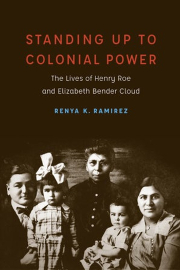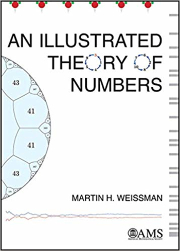PEN & INQ
By Emma Hiolski
Genomic (R)Evolution

Ever since the human genome was fully sequenced in 2003, genomics has permeated our lives and culture. Advances in sequencing technology make the information locked within our genes ever easier to access. But to what end?
This is one of the questions Jenny Reardon, UC Santa Cruz professor of sociology, grapples with in her book The Postgenomic Condition: Ethics, Justice and Knowledge after the Genome. Reardon applies historical and sociological analyses to genomic science to convey the challenges of creating meaning—biological, medical, and social—from a series of DNA base pairs.
Deciding what genetic information is valuable, and who gets to make those decisions, is an inherently social and political process, she said, that cannot be untangled from the science. Reardon hopes her book empowers readers to engage in that process. “I want people to know that they can take part in contemporary debates about genomics and biotechnology,” she said.
Native American Rights

Renya Ramirez, UC Santa Cruz professor of anthropology, inherited the drive to document her grandparents’ lives and activism from her mother. Ramirez’s grandparents, Henry Cloud, a Ho-Chunk, and Elizabeth Bender Cloud, an Ojibwe, were intellectuals and fierce advocates for Native American rights during the first half of the 20th century.
Starting with boxes of documents collected by her mother, Ramirez blended her roles as both a scholar and a descendant of the Clouds. Other, non-Native scholars had already written about them, she said, but had omitted important tribal and family perspectives.
The result of Ramirez’s efforts is a family-tribal history, Standing Up to Colonial Power: The Lives of Henry Roe and Elizabeth Bender Cloud. Ultimately, Ramirez hopes that readers will find inspiration in the story of her grandparents’ perseverance. “Even through very dark periods of our history, we can organize together and fight back,” she said. “We have to keep hope alive.”
Roots of Racism

During the late 19th century, antisemitism was widespread in Europe but especially virulent in France, said Dorian Bell, associate professor of literature. Rather than simply forming within France’s borders, he argues, this ugliness flared in response to—and supported—French colonial expansion.
For example, granting French citizenship to 35,000 indigenous Algerian Jews in 1870 through the Crémieux Decree helped stoke wide acceptance of international Jewish conspiracy theories. In Globalizing Race: Antisemitism and Empire in French and European Culture, Bell reflects on how different forms of racism interact across space and time, and how French history in particular foretells modern antisemitism and Europe’s increasing anti-immigrant xenophobia.
“You can’t understand the rise of antisemitism in France and Europe in a way that’s divorced from the rise of imperialism and colonialism,” he said. “And you can’t understand antisemitism in France today if you don’t understand that history. That history casts a long shadow.”
Visualizing Number Theory

Illustrations can provide a fresh take on the ancient field of number theory, a branch of mathematics devoted to studying the properties of whole numbers. “Complex proofs and formulas become easier to understand with the right picture,” said UC Santa Cruz mathematics professor Martin Weissman.
However, such illustrations can be difficult to create and incorporate into books. To create a “visual grammar” for number theory, Weissman learned how to code and craft graphics. Nearly 500 images appear in his book, An Illustrated Theory of Numbers.
In this textbook, Weissman provides an accessible introduction to number theory, complete with historical notes, recent developments, proofs, examples and exercises.
“I hope it gives people an appreciation for what number theory problems are, why they’re interesting, and how to solve them,” he said. “It’s a beautiful field, but outside the mathematical community, people rarely encounter it.”
Japanese American Internment

During World War II, members of Karen Tei Yamashita’s family—including parents, aunts, and uncles—were sent from Oakland, California, to internment camps in the Utah desert. Yamashita, UC Santa Cruz professor of literature, said she was sheltered from the worst of those experiences in her youth.
A more complete picture of her family’s wartime incarceration came to light when members of the earlier generation passed away and relatives discovered collections of letters, photographs, and documents. The family began to digitize these items, creating an online archive. Portions of this material appear in Yamashita’s book, Letters to Memory, a blend of family history and memoir.
“I was particularly interested in the family’s relationship to people who had helped them during the war,” she said, like Quakers and the Fellowship of Reconciliation. “I wanted to talk about how this wartime event relates to the larger picture of civil rights.”

